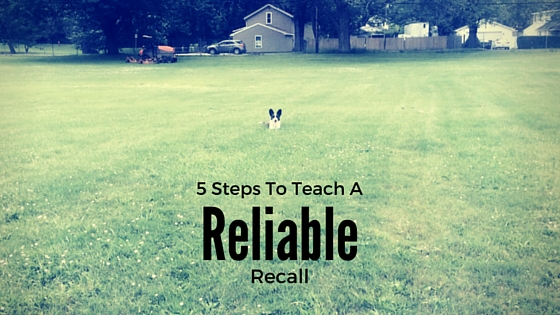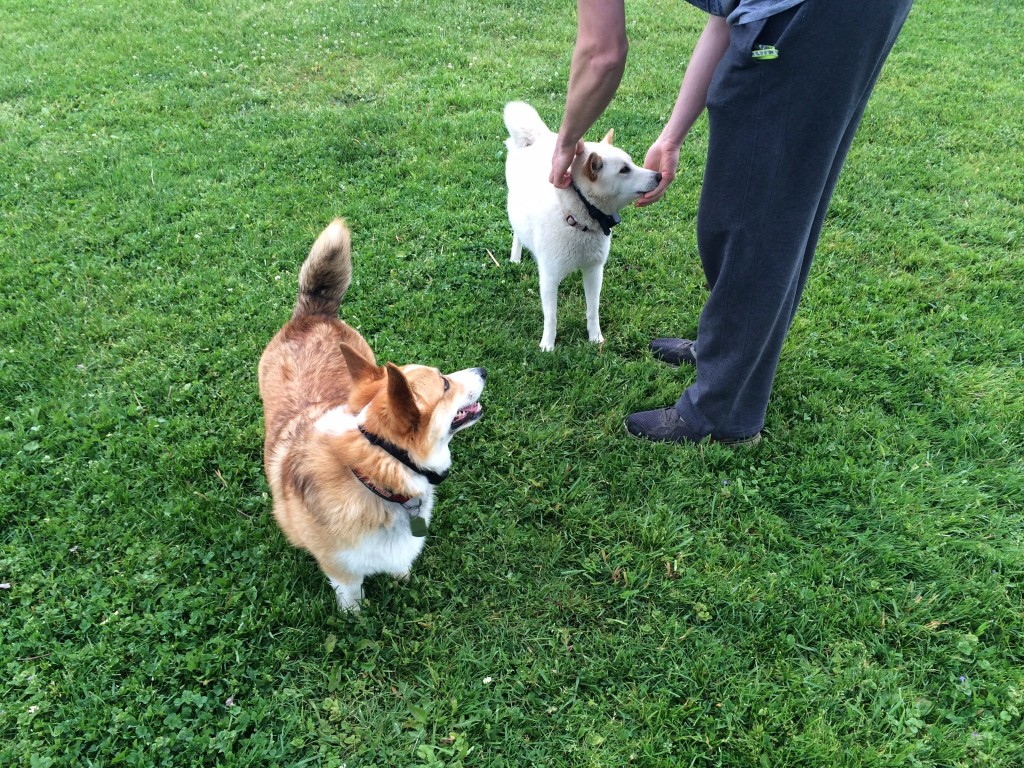5 Steps To Teach A Reliable Recall

When asking a client what their goals are for the end of a session, coming when called is almost always on the list. It only makes sense, because it is a life saving behavior – behavior being the key word. A lot of owners have a misconception that dogs understand the word “Come” and expect them to appear when the magic word is used. However, “Come”, just like sit or walking on a leash needs to be taught. Here are 5 step to teaching a reliable recall.
1. Charge the Word
If you use a clicker or marker word, you need to give meaning to the noise by pairing food or rewards with the noise. People often introduce the word “come” without it having any meaning to the dog. We want to charge the word with a very tasty, very high value treat. With the dog on a 6 ft leash, say the word “Come”, start to back up, and click or use your marker word when the dog moves with you and give them their reward. It is important to do this exercise for a solid week so that our dogs are developing a muscle memory response when they hear that word.
2. Never Punish A Recall
Never punish the dog for returning. Take it as a learning experience as to why the dog didn’t come back. Was the distraction too great? The key to getting a reliable recall is to always keep it positive and enjoyable from the dog’s perspective.
3. Make It A Game
If coming when called can be as exciting as a game of fetch or teaching a favorite trick, dogs would be far more reliable. Playing a game of round robin where the dog runs as fast as he can between two or more people to get his tasty recall reward can be a lot of fun and a great way to create a reliable recall. A game of chase where the dog chases you is also a great way to work on recall.
4. Increase Distractions Gradually
Once the word has been charged, it is time to gradually build distractions. Begin indoors and then outdoors while keeping the dog on a light long line. This provides the dog with some freedom while preventing them from running away. “Come” should not be used unless the client is willing to place $100 on the fact that the dog will come. If they aren’t willing to wager that then the distraction is likely too great and therefore the word should not be used.
5. Be Unpredictable
Don’t always call the dog when he is doing something that we find is less than desirable or something fun (like playing with other dogs or chasing a squirrel). Call the dog when he is doing nothing at all, too. The more often recall is practiced when it is easy, the quicker the dog will build muscle memory. Muscle memory will make it so that when distractions are tough the dog will quickly leave whatever is exciting and come back to you without thinking at all. When the dog comes to you be unpredictable in your generosity. Sometimes its only one tasty morsel of steak or sometimes its 10. This helps to prevent the dine and dash effect. This helps to create a dog that will hang out for a moment when he comes back.
Taking the time to build a reliable recall will allow the dog to have more freedom off leash in the future. This is one life-saving behavior where I encourage students to reward for life and always practice so that it never gets rusty.
Get Dog Training Business Tips!
Receive valuable dog training business tips and resources every week! Subscribe to The Modern Dog Trainer now by submitting your name and email below.
[mc4wp_form]




